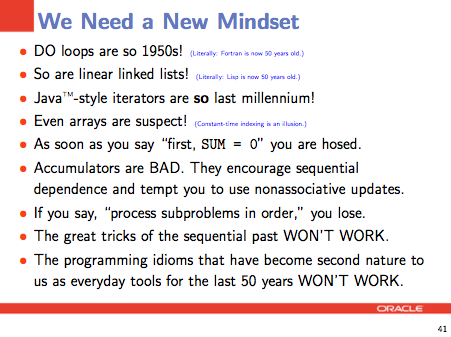Here is the story of a substantial chunk of my professional life over the last five years. I didn’t tell this story in real time (for various good reasons), though I have mentioned bits of it in various talks.
In 2004, I co-founded a vertical market Software as a Service firm, Mobile Workforce Management (MWM). MWM serves the underground utility locating industry with a Software-as-a-Service offering, TicketRx. Most people interact with this industry only with an occasional “call before you dig”, and think of it as just a phone number. However, there is a lot more to that industry than a phone number; there are numerous companies involved, each interacting with the others to complete the work. It is a vertical market niche with specific software needs, which our product met.
I personally wrote and administrated the first version of the TicketRx software and the first few servers, and my cofounder personally performed analysis, support, documentation, operations, and mountains of other work. We then incrementally hired a team to expand our capacity (and make ourselves replaceable), building an organization to serve its customers. Our software startup became an operating business with a life of its own.
Fast forward… five years of incremental and accelerating growth…
In 2009, the opportunity presented itself to sell MWM, and we did so. MWM is still there, operating fine without me. The press release about the sale is online and is also reproduced below. It is amusing to see how PR-speak invaded, labeling TicketRx as “custom” even though its whole essence was to not be custom, but rather off-the-shelf and highly configurable. Perhaps it is custom in the very broad sense of being industry-specific.
As is common in deals like this, the “terms of the transactions were not disclosed”, along with many other interesting bits. Still, I have a great number of lessons-learned to share in future posts and talks; and as of early 2010, there is extensive information about the product itself on the company’s web site, http://mwmsolutions.com/
Where does that leave me?
For some reason, the notion of having two companies then selling one, has been surprisingly hard to communicate. I still own Oasis Digital Solutions Inc., a consulting / custom software development firm, and work more intensely than ever with its customers and developers. Oasis Digital is growing up rapidly, with marketing efforts and ever-increasing process and organizational maturity.
Growing a product/SaaS business was a great experience, and one I hope to repeat. I’m actively on the lookout for another non-consulting software business to launch, when the time and opportunity are right.
St. Louis-based MWM sold to Consolidated Utility Services Inc.
Custom software product TicketRx, provides cost effective job tracking for utility locating company
Jan. 19, 2010: ST. LOUIS, Mo. – St. Louis-based Mobile Workforce Management has announced the successful sale of its company assets, including its commercial software as a service product, TicketRx, to Consolidated Utility Services Inc., an underground utilities locator company based in Omaha, Nebraska.
“With TicketRx, we created a customizable system to provide field service staff remote access and management tools for receiving, routing and tracking tickets and job assignments in real time,” said Kyle Cordes, a principal of Mobile Workforce Management (MWM) and owner of local consulting firm Oasis Digital. “We started TicketRx in 2004, and experienced great success with over 1,000 users and a growth rate of 25% per year.”
The sale of TicketRx to Consolidated will allow the company to integrate the system into their full spectrum of services that serve to protect utility companies’ underground infrastructure. In addition to ticket tracking, Consolidated offers clients systems for locating utilities, performing field audits and managing claims.
“Creating a comprehensive software solution such as TicketRx that fulfills a complex set of needs and watching it operate successfully is a very rewarding experience,” said Cordes. “I am confident the custom software solution we developed will make Consolidated’s business stronger.”
TicketRx processes one-call tickets from ‘call before you dig’ call centers or utility companies and then routes the work to the appropriate field worker. Technicians have immediate access to the information they need, which improves on-time performance. And managers have easy-to-use tools for scheduling, balancing work loads and providing emergency notifications. The system tracks all activity on the ticket, which can be used to create invoices and reports.
TicketRx is a Software as a Service (SaaS) model, a growing trend in which companies are adopting easy-to-use services that can be integrated efficiently, with minimal risk and at a cost advantage. With SaaS companies can have the service they need without the responsibility for their own internal servers, data centers or related IT staff, saving them time and money. According to industry analyst firm Gartner by 2010, 30 percent of all new software will be delivered as a service
Since the sale of MWM, Cordes will focus his energies on Oasis Digital. “The sale of MWM and TicketRx allows us to concentrate our efforts first on our consulting clients here in St. Louis and elsewhere, then later on our next SaaS opportunity,” Cordes said.
About Oasis Digital Solutions Inc.
St. Louis-based Oasis Digital develops custom software for workflow management, application integration, business process automation, and handheld devices for companies nationwide. Oasis Digital can produce a whole project or subsystem depending on the needs of the client, using a variety of computer languages and technologies. Fore more information, visit www.oasisdigital.com.
About TicketRx
TicketRx is a product of Mobile Workforce Management, LLC, and is a software-as-a-service program for the underground utility locating industry that can manage locating tickets from one-call centers or directly from the utility companies. TicketRx offers a unique combination of a broad feature set, fast setup and quick learning time. For more information, visit www.mwmsolutions.com/ticketrx.


